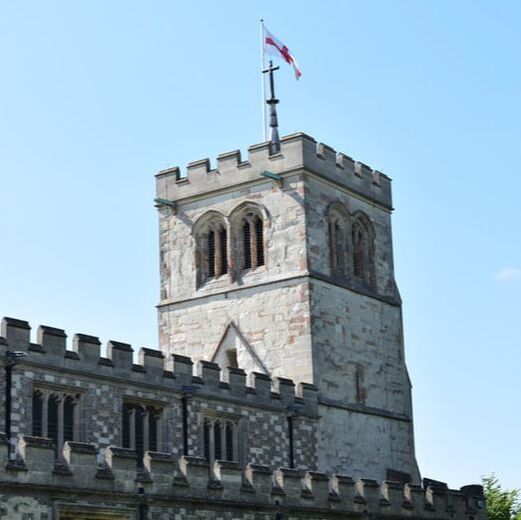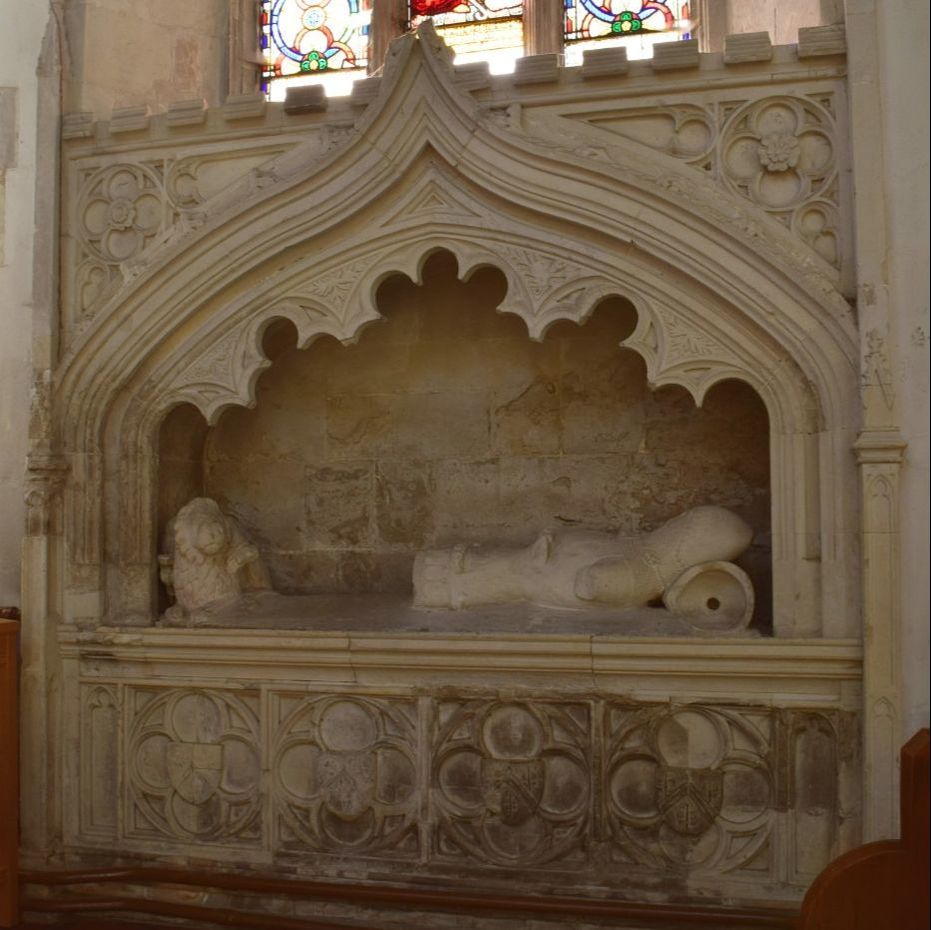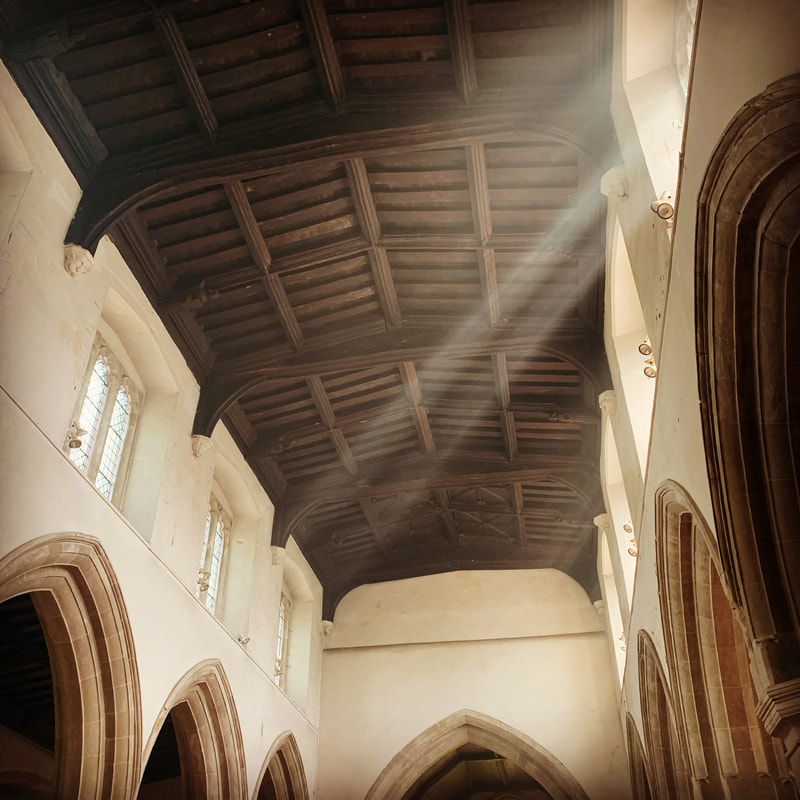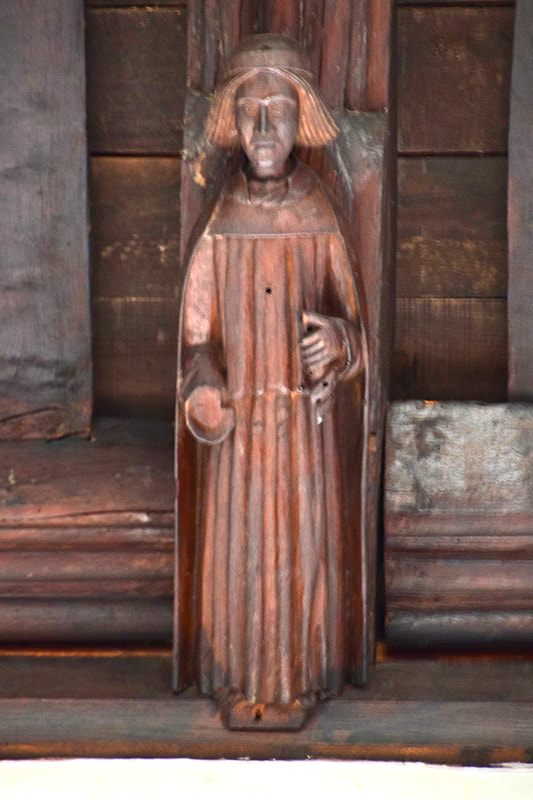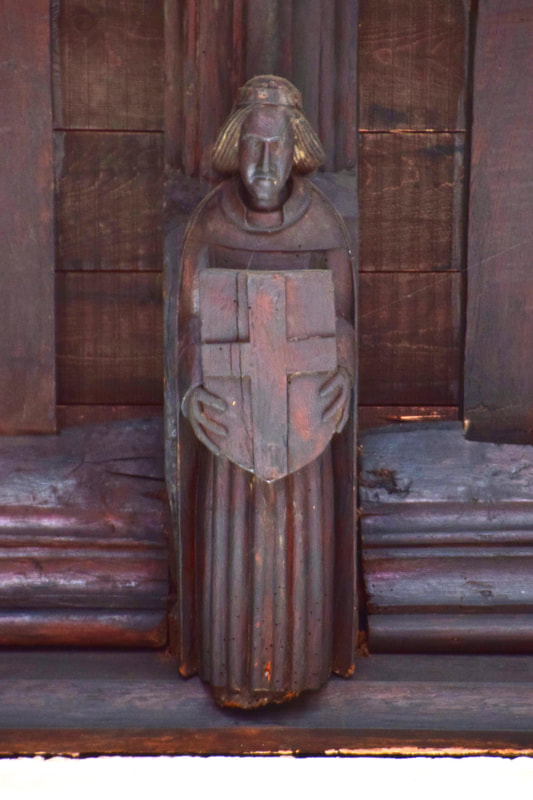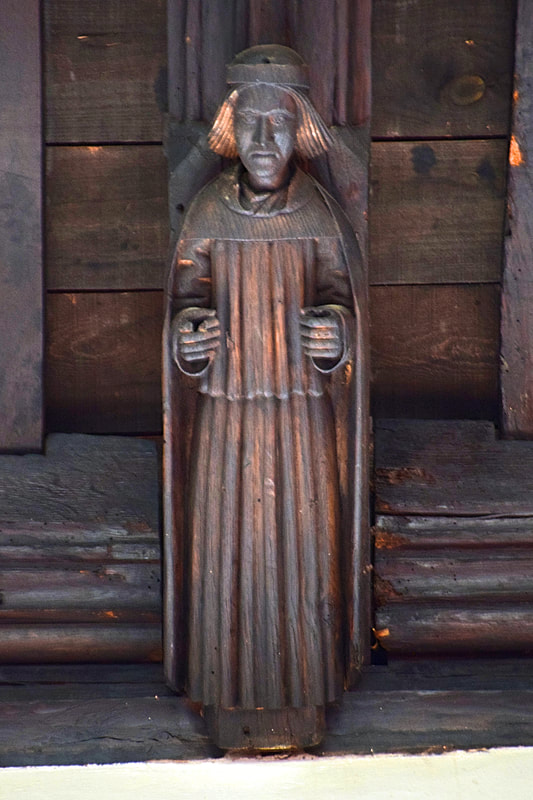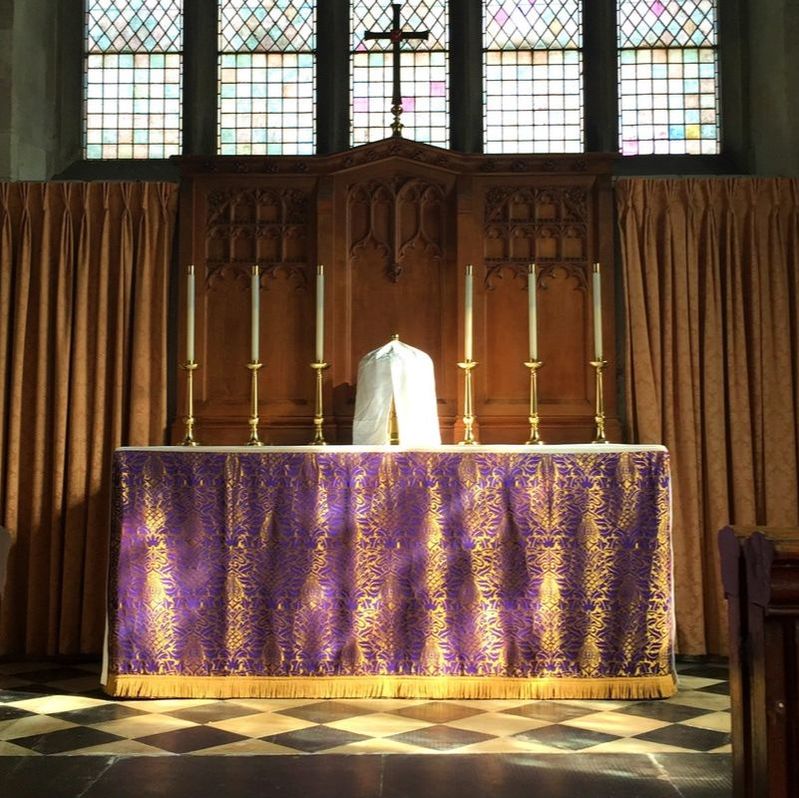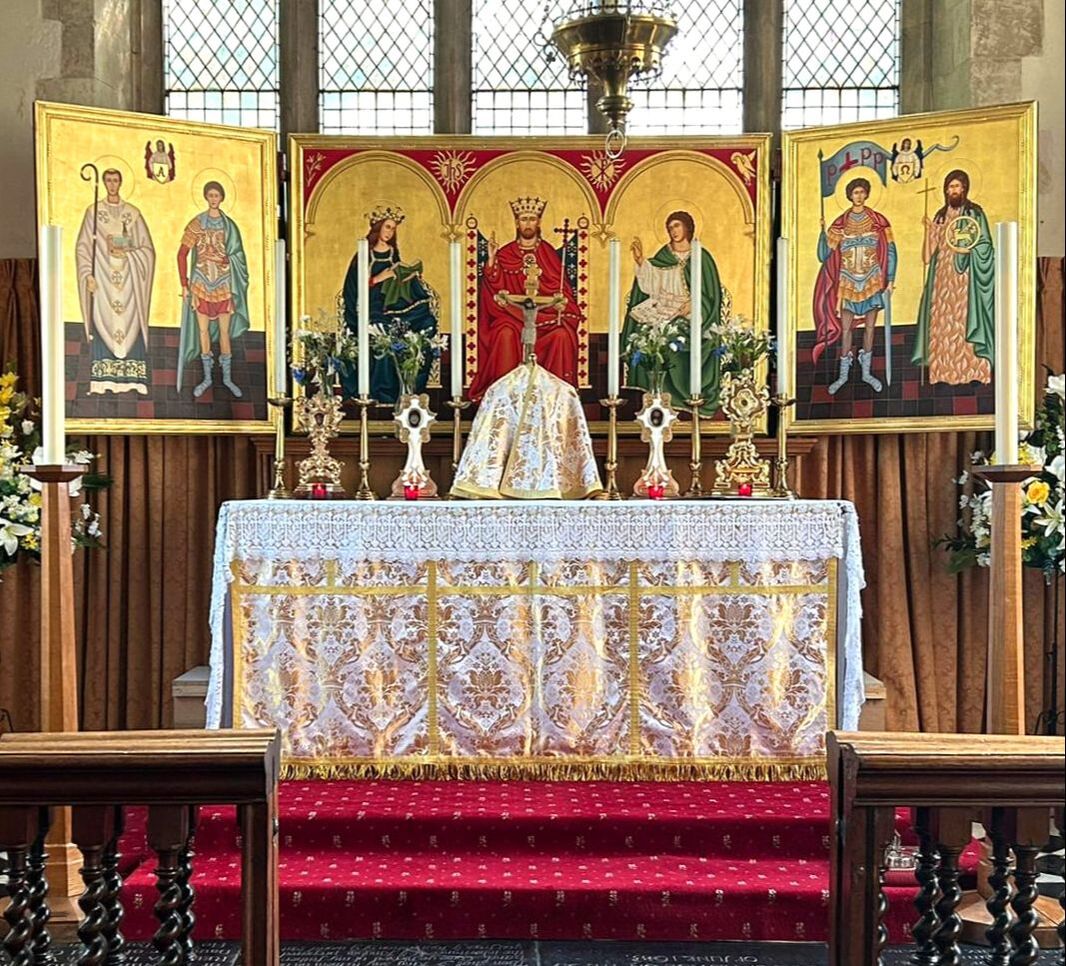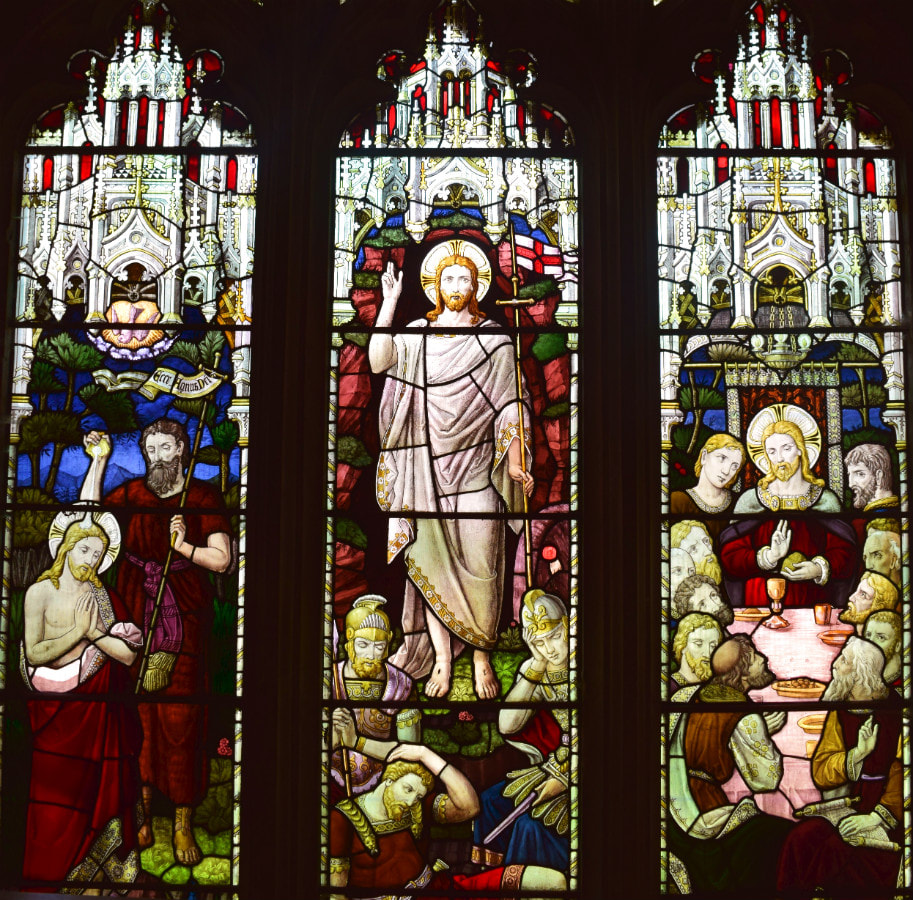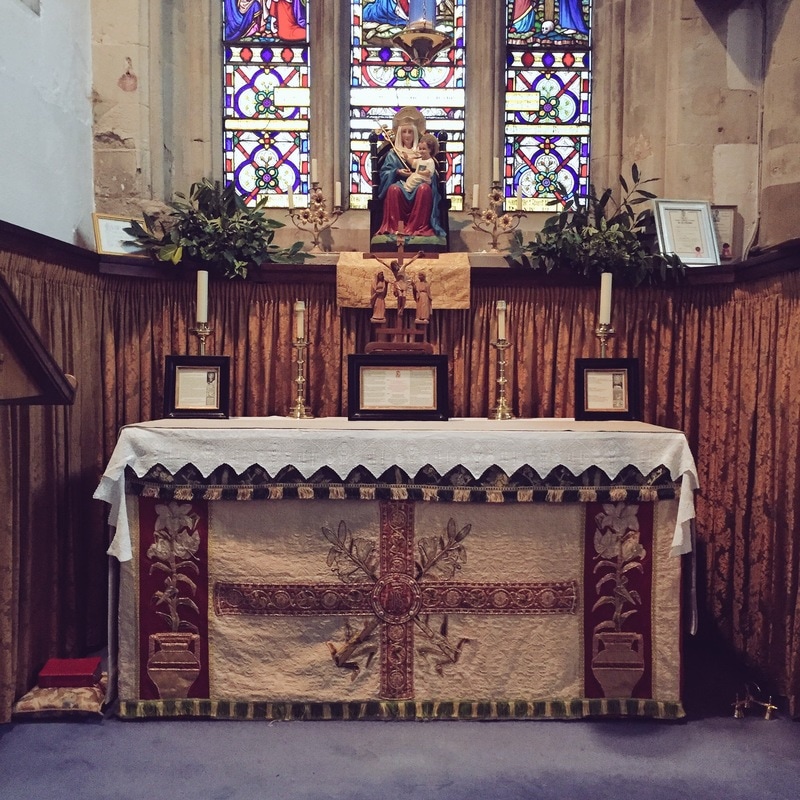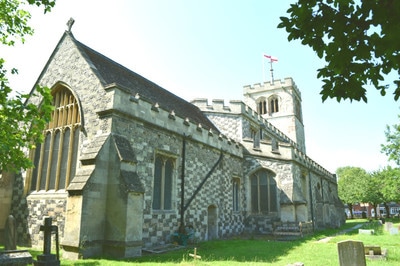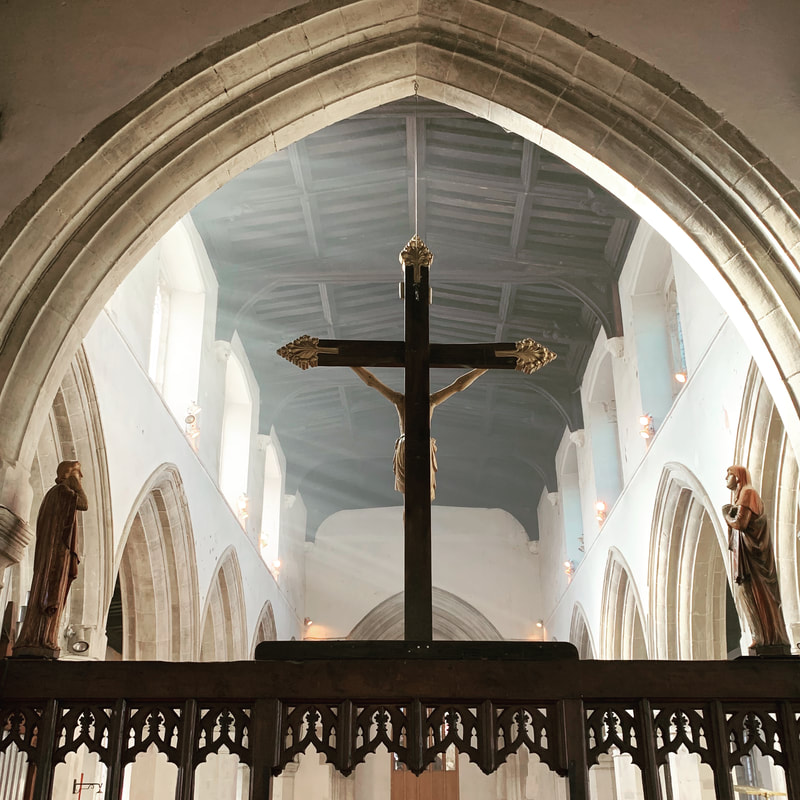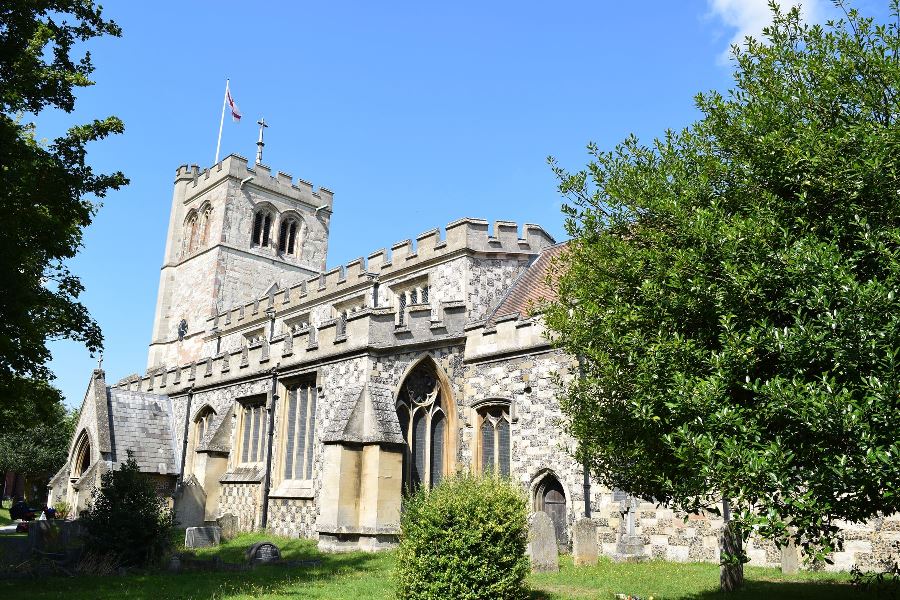|
All Saints' is a Grade I listed church situated at the heart of Houghton Regis; in the centre of what used to be the old village. The church is one of the very few in Bedfordshire to be mentioned in Domesday Book (AD 1086), which records that it was held by William the Chamberlain, who also held Luton Church. Houghton Regis itself was held by the King. Henry I gave Houghton Regis to Robert Earl of Gloucester, his illegitimate son. William, son of Earl Robert, granted the church to St Albans Abbey in 1153.
The main body of the current All Saints' was built in 14th century in the Rectilinear Gothic style, whilst the tower, the roof and the ceiling of the nave were remodelled in the 15th century. Here are a few things to look out for when you next visit this awe-inspiring place. |
DONATE
Please support our mission and work in the community! |
Tower
Extensively remodelled in the 15th century, All Saints' tower is a fine example of Rectilinear style accessed via a staircase in the southwest turret, and crowned by castellation. The cross above the tower is a later addition, to which a weathercock was then added in 1750. The tower also houses six bells, a spacious ringing chamber, and a beautiful Victorian stained glass window, flanked by medieval canopied niches.
The west door, currently blocked up, will be reopened in due course as part of our Restoration and Renewal programme. |
Font
The Norman font is the oldest known part of the church, having been constructed well before the present building was even begun. The font is one of a number of fonts known collectively as the 'Aylesbury Group' after a particularly fine example in the parish church at Aylesbury. It is made of Totternhoe stone, and its elbaorate carvings are particularly good. The lid is made out of reclaimed timber from Houghton Hall.
Hollywood star Gary Cooper was baptised here, along with his brother Arthur, in 1911. Interestingly, the font is large enough to accommodate baptisms by immersion for young children – an option is still available today! |
Sewell Tomb
In the south aisle wall is a tomb with the effigy of a knight at with a lion at his feet. This is reputedly the tomb of John de Sewell who accompanied the Black Prince to Aquitaine in 1366 in the retinue of Hugh, Earl of Stafford. It is carved with quatrefoils framing heraldic shields displaying a chevron and three butterflies. This is possibly the earliest heraldic shield associated with a Sewell. The hamlet of Sewell is situated within the parish.
A medieval piscina and decorated ceiling indicate that an altar stood nearby. And indeed, this area of the church may have been a chantry chapel for John de Sewell and his family. |
Nave Ceiling
The nave ceiling dates to latter part of the 14th century (or the beginning of the 15th); it is a simple but elegant example of Rectilinear gothic architecture. It is supported by stone corbels in the shape of animals and mythical creatures, and it is decorated with carved oak figures of saints (all dressed as monks) bearing shields or coat of arms. These figures are visible reminders of the connection between All Saints’ and St Albans’ Abbey.
The east end is more elaborately decorated then the rest of the ceiling, providing a “canopy of honour” for the Cross (or Rood), and marking the original position of the Rood Screen. |
Chancel
The chancel (east end of the church) was partly rebuilt in the 19th century, after many decades of neglect, under the direction of Somers Clarke. The restoration preserved many other original features, such as the medieval wall safes. The altar rail, made from the reclaimed staircase banister of Houghton Hall, divides the chancel in two areas; choir and sanctuary.
The floor is mostly paved with the stone monuments to members of the Brandreth family, save for the chequered marble flooring around the altar and, most notably, two brasses. One of these is an effigy of William Walley, 15th century vicar of All Saints'. |
High AltarThe altar in the chancel is made of solid oak carved in the Rectilinear style. This was donated in memory of those who gave their lives during the First World War and consecrated in 1913.
The altar is furnished with frontals that are changed according to the liturgical seasons (the photo shows the purple frontal used during Advent and Lent). Frontals are removed only twice a year; for Good Friday, and Remembrance Sunday. The Blessed Sacrament is reserved here and its presence is highlighted by the veil covering the tabernacle, and by the lamp hanging above the entrance of the sanctuary. |
High Altar TriptychThe triptych depicts Christ in glory with the Blessed Virgin Mary and St John the Evangelist in the central panel, St George and St John the Baptist in the right section, St Wilfrid and St Theodore of Amasea in the left panel. The piece was commissioned in 2007 for Preston Minster and painted by Nechita Laurentiu, a Romanian icon writer.
It was installed and dedicated in June 2023 to the glory of God and the memory of Fr Colin Gay. |
Stained Glass
The church is decorated by several beautiful Victorian stained-glass windows by Thomas Baillie – in the tower, Lady Chapel, and above the Sewell Tomb.
The window of the Risen Christ, pictured here, is located above the west door and it illustrates the Resurrection of Jesus (centre), the Baptism of the Lord (left), and the Institution of the Eucharist (the Last Supper, right). |
Lady Chapel
The east end of the north aisle is occupied by the Lady Chapel; a side chapel dedicate to Mary the Mother of God, under the title of Our Lady of Walsingham.
It is customary in many churches to have a chapel dedicated to the Blessed Virgin, but we do not know where the original one here may have stood. The altar came from Christ Church Dunstable, and so did the frontals. The white one (pictured), though in need of extensive repairs, is a fine example of 19th century ecclesiastical embroidery. |
Organ
A two manual and pedal instrument, dates from approximately 1880 and 1914. It was originally believed to have been built by Nicholson and Lord of Walsall. However, in 2021 during cleaning and refurbishment works by Pipe Organ Services it was discovered that the organ was originally built by C. M. Walker of London and only later later rebuilt by Nicholson and Lord of Walsall. Several additional stops (including the full-length Conacher trumpet) were installed by Kenneth Breedon of Bletchley in 1992.
The organ is used to accompany our choir and lead our worship on Sundays and Holy Days, for occasional offices and other occasions. The music tradition of All Saint's is an important part of our mission both to the parish and the wider community. |
